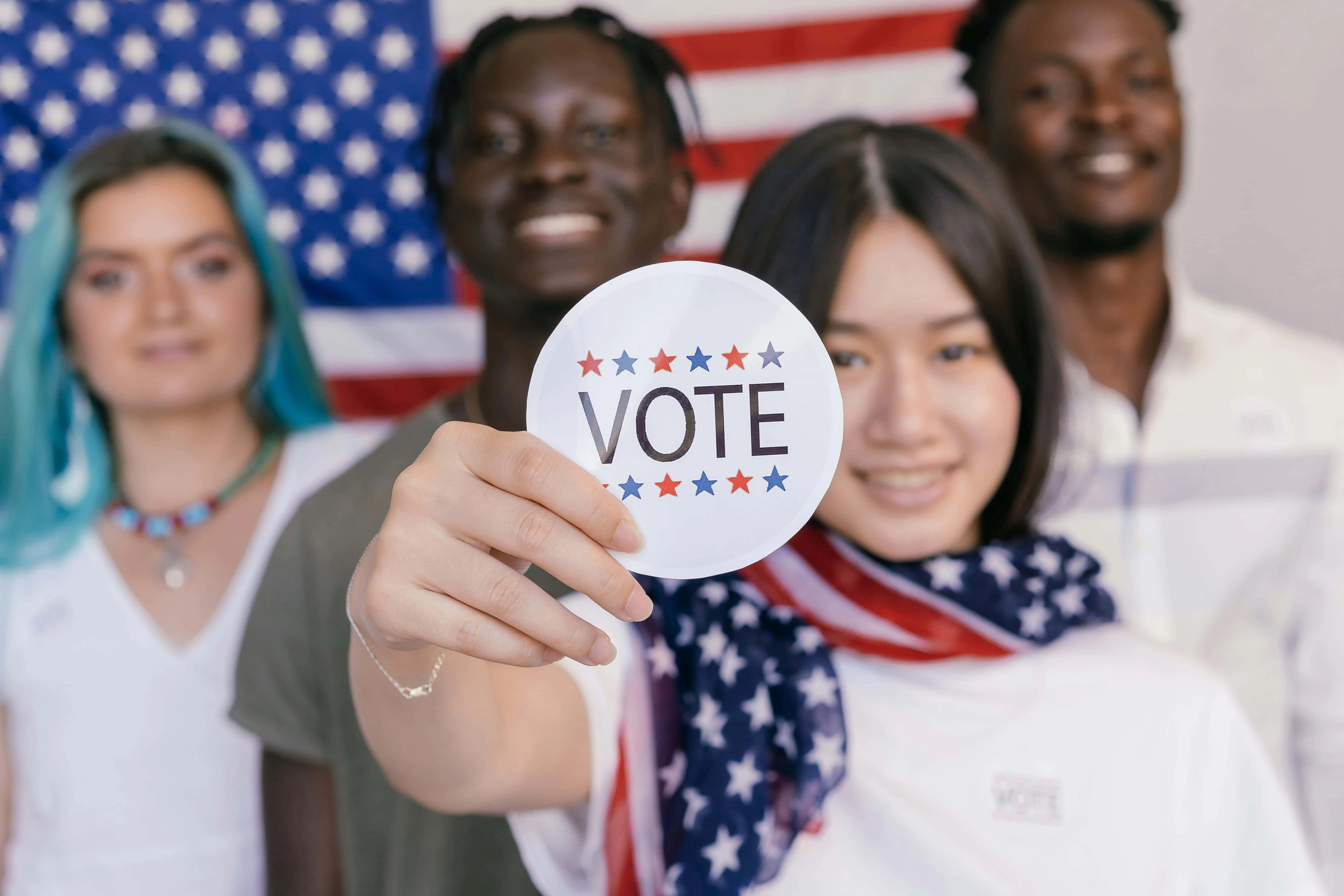Welcome to a transformative journey through the history and impact of the civil rights movement in the United States. This course is designed for entry-level job seekers and those interested in the intersections of history with today’s workplace diversity.
As you dive into this guide, you’ll discover the key figures and landmark events that defined the civil rights movement. You’ll also learn how the movement’s legacy influences modern employment practices and the importance of diverse and inclusive workplaces. Whether you’re a student or simply seeking to understand more about how historical movements shape our current world, this guide provides accessible insights that enrich your knowledge.
Overview of the Civil Rights Movement in the United States
The Civil Rights Movement was a pivotal era in United States history, marked by widespread activism against racial segregation and discrimination. This movement sought to achieve equal rights for African Americans and began in earnest in the mid-20th century. Here’s a brief overview:
Early Beginnings
The roots of the civil rights movement can be traced back to the early 1900s, influenced by earlier abolition and civil rights efforts. Activists pushed for equality through various forms of protests, legal challenges, and public voicing against systemic discrimination.
The Mid-20th Century Surge
By the 1950s and 1960s, the movement gained significant momentum. Several key events during this period further ignited public support and led to notable changes:
- The 1954 Supreme Court decision in Brown vs. Board of Education declared state laws establishing racial segregation in public schools as unconstitutional.
- The Montgomery Bus Boycott of 1955-1956 was a critical moment led by figures like Rosa Parks and Dr. Martin Luther King Jr., highlighting Black communities’ economic power.
- The March on Washington in 1963, where Dr. King delivered his iconic “I Have a Dream” speech.
Towards the Late 20th Century
Following these events, the Civil Rights Act of 1964 and the Voting Rights Act of 1965 were enacted. These laws were critical in dismantling institutional barriers and ensuring better legal protections against racial discrimination.
While the Civil Rights Movement primarily focused on Black Americans’ rights, it also set the stage to advocate for their rights, fundamentally reshaping American society.
Several resources document this essential period. Resources like the National Park Service provide extensive information for further reading and educational materials.
Key Figures and Leaders
The Civil Rights Movement was driven by numerous courageous and visionary leaders who dedicated their lives to equality and justice. Here are some of the most influential figures:
Martin Luther King Jr.
Perhaps the most iconic leader of the civil rights era, Dr. Martin Luther King Jr.’s approach to non-violent protest inspired thousands to seek justice through peaceful means. His leadership during events like the Birmingham Campaign and his poignant speeches, including the famous “I Have a Dream,” solidified his place in American history.
Rosa Parks
Rosa Parks is often called “the mother of the civil rights movement.” Her refusal to give up her seat on a Montgomery bus symbolized resistance to racial segregation and catalyzed the Montgomery Bus Boycott.
Malcolm X
Another pivotal figure, Malcolm X, advocated for the rights of Black Americans, often contrasting Dr. King by underlining the need for self-defense in the face of violence. His eloquent articulation of the complexities of race and empowerment remains influential.
Other Notable Leaders
- Fred Shuttlesworth, a key organizer who bravely challenged segregation in Birmingham, often faced near-fatal attacks.
- Ella Baker, whose behind-the-scenes organizing set the foundation for many of the era’s key initiatives, such as the Student Nonviolent Coordinating Committee (SNCC).
- John Lewis was pivotal in the Selma marches and later served as a U.S. Congressman for over three decades.
These leaders, among others, utilized a range of strategies and approaches, from peaceful protests to legal challenges, which collectively contributed to advancing the rights of African Americans. Their legacies live on and continue to inspire movements for justice and equality across the world.
For more insights into the contributions of these leaders, educational resources from NAACP’s historical profiles offer detailed accounts of each figure’s impact.
Major Events that Shaped the Movement
The civil rights movement in the United States was defined by several key events that significantly altered the course of American history. Here’s a look at some major milestones:
Little Rock Nine (1957)
In a bold stand for educational integration, nine African American students enrolled at Little Rock Central High School in Arkansas. Their enrollment prompted a national crisis that necessitated federal intervention to protect them against hostile crowds.
Freedom Rides (1961)
This series of bus trips through the American South aimed to challenge the non-enforcement of Supreme Court decisions that segregated interstate buses and terminals. The Freedom Riders’ bravery drew international attention, highlighting profound racial injustices in the U.S.
Birmingham Campaign (1963)
Also known as Project C, this movement featured organized boycotts and mass protests in Birmingham, Alabama, a city notorious for its strict enforcement of racial segregation. The campaign’s success in galvanizing media attention helped ensure national support for civil rights initiatives.
The Selma to Montgomery Marches (1965)
These three protest marches highlighted the demand for African American voting rights and directly led to the passage of the Voting Rights Act of 1965, one of the movement’s most significant victories.
These events, among others, were turning points that not only pressured the government to enact important legislation but also raised public awareness about the struggles and inequality faced by African Americans.
Their significance is often spotlighted in U.S. history classes and academic resources.
Impact on Legislation
The civil rights movement in the United States catalyzed profound legislative changes that reshaped American society. Key laws passed during this era were instrumental in paving the way for more equitable social systems. Here are some of the most critical pieces of legislation:
Civil Rights Act of 1964
This landmark law outlawed discrimination based on race, color, religion, sex, or national origin. It ended the unequal application of voter registration requirements and racial segregation in schools, workplaces, and facilities that served the general public.
Voting Rights Act of 1965
Focused on overcoming legal barriers at the state and local levels that prevented African Americans from exercising their right to vote as guaranteed under the 15th Amendment. This act is considered one of U.S. history’s most far-reaching pieces of civil rights legislation.
Fair Housing Act of 1968
Also known as Title VIII of the Civil Rights Act of 1968, this law provided for equal housing opportunities regardless of race, religion, or national origin and made it a federal crime to “by force or by threat of force, injure, intimidate, or interfere with anyone” based on their demographic background.
These laws not only changed the legal landscape but also inspired continued advocacy for equality and justice across various sectors of society. Their impact is still evident today in ongoing debates and legal challenges related to civil rights.
For a deeper understanding of these legislative achievements, educational resources are available on sites such as the Library of Congress.
Cultural Influence and Public Perception
The civil rights movement in the United States profoundly influenced American culture and shaped public perception of racial equality. The movement’s legacies are embedded in various aspects of society, from media to education.
Media and the Arts
During the movement, television and newspapers played crucial roles in bringing the realities of racial injustice to the forefront of public consciousness. Iconic music and art were born from this era, carrying messages of hope and resistance, which helped fuel the drive for civil rights.
Educational Reforms
Subsequent to the movement, schools began to integrate not just racially but also in terms of curriculum. Educational materials now include comprehensive discussions on civil rights struggles, which is crucial to forming a more inclusive historical narrative.
Public Attitudes
As a result of the movement, more Americans began to support the idea of equality, regardless of race. This shift in mindset encouraged further civil rights advocacies, including gender equality and rights for other marginalized communities.
Today, the civil rights movement’s influence is clear in its continuous efforts to address and rectify racial disparities. Major institutions and initiatives, like the Southern Poverty Law Center, continue to work towards a more just society.
Understanding these cultural shifts is essential for recognizing the full impact of the civil rights movement. For additional insights, educational resources can be found on the Smithsonian Magazine website.
Ongoing Legacy and Modern Movements
The civil rights movement in the United States set the foundation for numerous modern movements advocating for equality and justice across various demographics.
Continued Advocacy for Racial Equality
Today’s movements, such as Black Lives Matter, draw direct inspiration from the civil rights movement, advocating against systemic racism and violence towards Black individuals. These movements continue to influence public policy and societal norms.
Expansion to Other Rights Movements
The strategies and successes of the civil rights movement have also energized other rights movements, including LGBTQ+ rights, disability rights, and immigrant rights, promoting a broader scope of social justice.
Role of Technology and Social Media
Unlike the 1960s, modern advocacy harnesses online platforms to organize, educate, and connect supporters worldwide, amplifying their message quickly and effectively across global audiences.
The civil rights movement’s enduring influence is evident not only in the continuation of the struggle for racial equity but also in the adaptation of its principles to a changing social and technological landscape.
To further explore how the civil rights movement impacts contemporary social movements, resources at Civil Rights Teaching offer detailed educational materials.
Civil Rights and Cultural Diversity Employment
The civil rights movement in the United States has significantly impacted employment practices, pushing organizations towards diversity and inclusion in the workplace.
Legal Framework and Corporate Policies
Anti-discrimination laws stemming from the civil rights movement have established a legal framework that promotes equitable hiring, pay, promotion, and termination treatment. Companies increasingly adopt diversity and inclusion policies that comply with these laws and recognize the value of a diverse workforce.
Impact on Workplace Culture
Inclusion initiatives have encouraged a more collaborative and accepting workplace environment. Companies boost morale and increase their innovation capacity by celebrating different cultures, experiences, and perspectives.
Challenges Remain
Despite progress, disparities in employment opportunities and wages still exist. Ongoing efforts are necessary to address these gaps and ensure that employment equity is a reality for all, regardless of background.
Organizations like the Equal Employment Opportunity Commission are pivotal in monitoring and enforcing workplace equality.
FAQs
What initiated the civil rights movement in the United States?
The movement emerged from long-standing resistance to racial segregation and discrimination. Activists sought equal rights and justice for African Americans, catalyzed by pivotal moments like the Montgomery Bus Boycott.
Who were some of the major leaders of the civil rights movement?
Key figures included Martin Luther King Jr., Rosa Parks, Malcolm X, and many others who led efforts to challenge racial injustices and led significant events.
How does the civil rights movement affect us today?
It laid the groundwork for ongoing rights movements and influenced societal attitudes towards diversity and inclusion.
Can the strategies of the civil rights movement be applied to modern struggles?
Yes, the principles of nonviolent protest and legal challenges are still effective.
Are there resources for learning more about the civil rights movement?
Many resources are available online and in libraries, including documentaries, books, and interactive websites that offer educational insights.
Conclusion
The civil rights movement was a transformative period that reshaped the nation, advancing the cause of equality and justice. Significant strides were made toward dismantling systemic barriers to racial equality through the tireless efforts of committed individuals. The movement’s legacy inspires current generations to advocate for social justice across various fronts.
Embracing diversity and promoting inclusion is crucial for building a just society where everyone has the opportunity to succeed. To further this goal, consider joining Diversity Employment, where you can be part of a community dedicated to advancing workplace diversity and empowerment. Forget the other job hunting websites, with Diversity Employment we can continue the work started by the civil rights movement pioneers by ensuring that equity remains at the forefront of our professional and personal endeavors.




